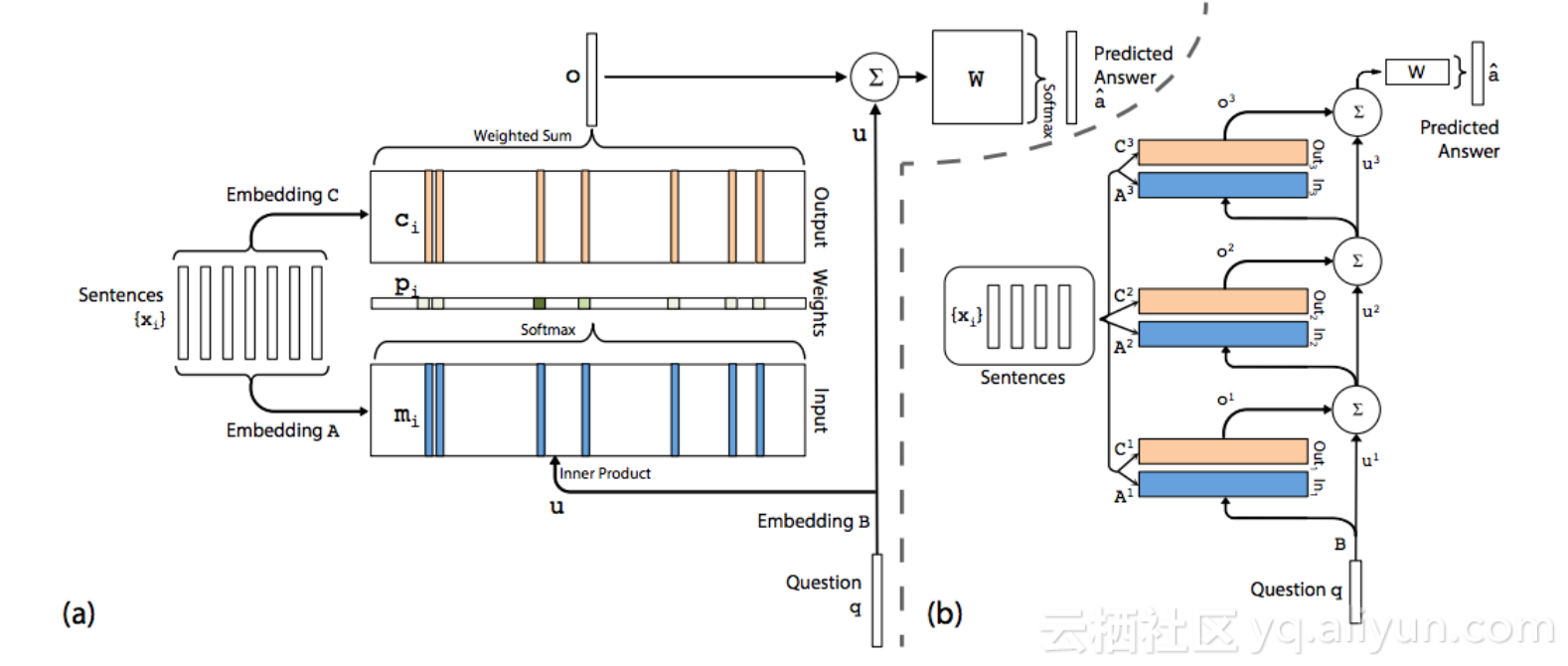MemN2N
1. Summary
MemN2N is a generalization of RNN
1) The sentence in MemN2N is equivalent to the word in RNN;

2. Kernel Code
def build_model(self): self.build_memory() self.W = tf.Variable(tf.random_normal([self.edim, self.nwords], stddev=self.init_std)) z = tf.matmul(self.hid[-1], self.W) self.loss = tf.nn.softmax_cross_entropy_with_logits(logits=z, labels=self.target) self.lr = tf.Variable(self.current_lr) self.opt = tf.train.GradientDescentOptimizer(self.lr) params = [self.A, self.B, self.C, self.T_A, self.T_B, self.W] grads_and_vars = self.opt.compute_gradients(self.loss,params) clipped_grads_and_vars = [(tf.clip_by_norm(gv[0], self.max_grad_norm), gv[1]) for gv in grads_and_vars] inc = self.global_step.assign_add(1) with tf.control_dependencies([inc]): self.optim = self.opt.apply_gradients(clipped_grads_and_vars) tf.global_variables_initializer().run() self.saver = tf.train.Saver()
def build_memory(self): self.global_step = tf.Variable(0, name="global_step") self.A = tf.Variable(tf.random_normal([self.nwords, self.edim], stddev=self.init_std)) self.B = tf.Variable(tf.random_normal([self.nwords, self.edim], stddev=self.init_std)) self.C = tf.Variable(tf.random_normal([self.edim, self.edim], stddev=self.init_std)) self.T_A = tf.Variable(tf.random_normal([self.mem_size, self.edim], stddev=self.init_std)) self.T_B = tf.Variable(tf.random_normal([self.mem_size, self.edim], stddev=self.init_std)) Ain_c = tf.nn.embedding_lookup(self.A, self.context) Ain_t = tf.nn.embedding_lookup(self.T_A, self.time) Ain = tf.add(Ain_c, Ain_t) Bin_c = tf.nn.embedding_lookup(self.B, self.context) Bin_t = tf.nn.embedding_lookup(self.T_B, self.time) Bin = tf.add(Bin_c, Bin_t) for h in xrange(self.nhop): self.hid3dim = tf.reshape(self.hid[-1], [-1, 1, self.edim]) Aout = tf.matmul(self.hid3dim, Ain, adjoint_b=True) Aout2dim = tf.reshape(Aout, [-1, self.mem_size]) P = tf.nn.softmax(Aout2dim) probs3dim = tf.reshape(P, [-1, 1, self.mem_size]) Bout = tf.matmul(probs3dim, Bin) Bout2dim = tf.reshape(Bout, [-1, self.edim]) Cout = tf.matmul(self.hid[-1], self.C) Dout = tf.add(Cout, Bout2dim) self.share_list[0].append(Cout) if self.lindim == self.edim: self.hid.append(Dout) elif self.lindim == 0: self.hid.append(tf.nn.relu(Dout)) else: F = tf.slice(Dout, [0, 0], [self.batch_size, self.lindim]) G = tf.slice(Dout, [0, self.lindim], [self.batch_size, self.edim-self.lindim]) K = tf.nn.relu(G) self.hid.append(tf.concat(axis=1, values=[F, K]))
3. Reference
Blog: Memory-network
Github: MemN2N-tensorflow
Paper: End-To-End Memory Networks
原文链接



